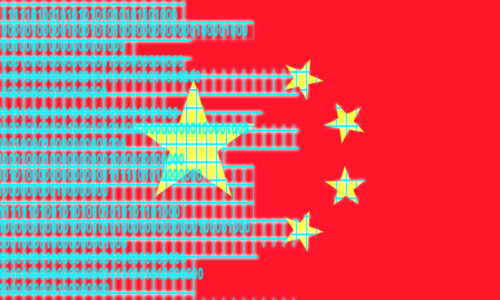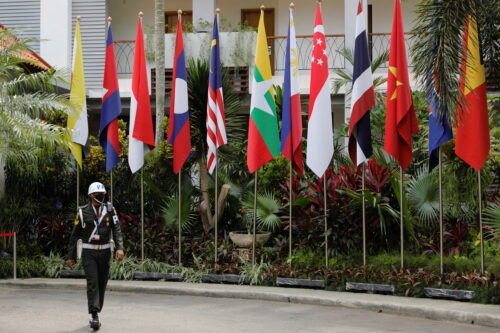
Soliciting microdonations—those between $0.25-$10— are helping Chinese nonprofits make significant inroads into cultivating Next Gen donors. China’s 99 Giving Day fundraising platform, which has no transaction fees, allows nonprofits to set donation levels at as low a point as they wish. This has drastically lowered the barrier to entry for would-be donors: more than half of 99 Giving Day donations (53%) were donations of less than 10 yuan ($1.45). As a point of comparison, the average online donation in the U.S. is $128 — a much higher entry point.
China’s mobile-based and gamified approach to fundraising allows nonprofits to weave charitable giving into the daily habits of millennial and Gen Z donors. One example of this is 99 Giving Day, China’s biggest philanthropic event of the year over nine days in September, where donors can give to their favorite charities using WeChat. This has helped Chinese nonprofits unlock donations from younger generations. Fundraising platforms in China have also tapped the potential of microphilanthropy, and offer interesting lessons for global counterparts.
Microphilanthropy is any donation between $0.25 and $10, according to Charity Navigator. In the U.S., small donations have grown in relative importance in recent years, with the rise of crowdfunding, “roundup” donations, and other innovative fundraising strategies. Think of rounding up your purchase at your neighborhood cafe or drugstore to donate to a charity, or donating $10 to a friend’s birthday fundraiser on social media.
Of course, transaction fees mean micro-donations aren’t always worth it. There is the typical $0.30 transaction fee for each credit card purchase, which limits the impact of “roundup” donations at the cash register. Online fundraising platforms in the U.S. also typically charge a fee per donation (GoFundMe, for example, charges a 2.9% fee plus $0.30 per donation). This sets a donation floor for U.S. fundraisers and charities using these platforms.
More recently, these barriers to entry have been steadily decreasing with the growth of mobile payments and philanthropic innovations. Amazon Smile, for instance, has become a household name in microphilanthropy. When a consumer makes a purchase on Amazon Smile, 0.5% of the price is donated to a nonprofit of their choice. These donations are administered by the AmazonSmile Foundation. Amazon pays for the foundation’s associated expenses: donations come at no cost for either the consumer or nonprofit.
Amazon Smile is probably the closest U.S. analogue to the lack of transaction fees on 99 Giving Day. Like Amazon, Tencent covers all expenses related to 99 Giving Day charitable giving, such as the enabling technology, marketing, and other costs (Disclosure: Tencent is a donor to the Serica Initiative.) Individuals and nonprofits participating in 99 Giving Day, like their Amazon Smile counterparts, do not bear any costs.
As a result, 99 Giving Day nonprofits can set donation levels at as low a point as they wish. This has drastically lowered the barrier to entry for would-be donors. In 2021, 99 Giving Day donations increased 41% from 2020 to 150 million donations, totaling 5 billion yuan ($735 million). More than half (53%) were donations of less than 10 yuan ($1.45). Donations above RMB 1000 ($145) made up only 1% of donations. As a point of comparison, the average online donation in the U.S. is $128 — a much higher entry point.
What differentiates the example of 99 Giving Day in China, however, is its breadth. Micro-donations in the U.S. are typically tied to consumer purchases. The Stanford Social Innovation Review defines this as “consumption philanthropy.” Also known in the business world as “cause marketing,” this “pairs the support of a charitable cause with the purchase or promotion of a service or product.” Amazon Smile is a prominent example.
99 Giving Day donations, however, do not have to be tied to a purchase at all. An individual can contribute to their friend’s crowdfunding campaign or directly to a charity, as they would on GoFundMe, but at no cost. This further lowers the barrier to entry to charitable giving, helps broaden the base of potential donors, and contributes toward building a culture and habit of charitable giving.
Consumption philanthropy has been criticized for its potentially detrimental long-term effects for the causes it is trying to help. According to the SSIR article, cause marketing campaigns can actively discourage consumers from making future charitable donations, because they start thinking of their purchases as donations. Similar criticisms can be leveled at micro-donations. If someone makes a $10 donation on a crowdfunding campaign in November, they may be less inclined to make the bigger donation they would previously make to their favorite nonprofit in December over the holidays. To them, they’ve already fulfilled their giving quota for the season with the micro-donation.
These criticisms provide much food for thought. They may be less relevant for the development of philanthropy in China, however, for several reasons. As mentioned above, 99 Giving Day moves away from the model of consumption philanthropy that is typically associated with small donations in the U.S. Much like Amazon, Tencent foots the bill for the donation transaction fees. But unlike Amazon, 99 Giving Day isn’t tied to the donor making a purchase. This avoids some of the potential pitfalls of cause marketing, and also opens up the possibilities for first-time or young donors to make donations without first buying something — therefore making the barrier to entry even lower.
To be sure, this aspect of 99 Giving Day might not be replicable in the U.S. Tencent’s philanthropic initiatives are entirely separate from its bottom line. Companies benefit, of course, from the reputational sheen of their philanthropic efforts. But Tencent has an incentive unique to Chinese companies. Tech companies in China face particular pressure to consider their social impact. The Chinese government has emphasized the importance of tech for the country’s economic development. Companies are encouraged to give back to society, beyond the consumer-driven and branding incentives for U.S. companies.
Even so, the importance of 99 Giving Day micro-donations to help attract new, Next Gen donors could have broader applications beyond China. Encouraging small donations might not necessarily discourage donors to make the bigger donations they’d otherwise make — not in markets when these are first-time donors, who probably wouldn’t be giving at all if the barriers to giving were lower. This is especially important in fundraising environments that are still in the early stages of establishing a culture and community of mainstream, broad-based charitable giving.
The U.S. has a much longer history and culture of philanthropy than China, of course. But the lessons of 99 Giving Day in China can still apply, especially when appealing to first-time, young donors — making charitable giving more accessible and fun with a mobile-first fundraising strategy; gamification; and low barriers to entry through micro-donations.
Edited by Daniel Tam-Claiborne.
- Want to learn more? The Serica Initiative’s China Impact Newsletter is a monthly deep-dive into the trends, major players, and regulatory environment for philanthropic and nonprofit activity between the U.S. and China. Subscribe to the newsletter here.






